Posted Feb. 22, 2016
Ladd Bayliss is a coastal advocate in the Manteo office of the North Carolina Coastal Federation.
Series of images provided courtesy North Carolina Coastal Federation.
For North Carolina’s crab pot patrol, the charge is simple: search, find and recover ghost crab pots with no buoy visible, and visible crab pots with buoy visible.
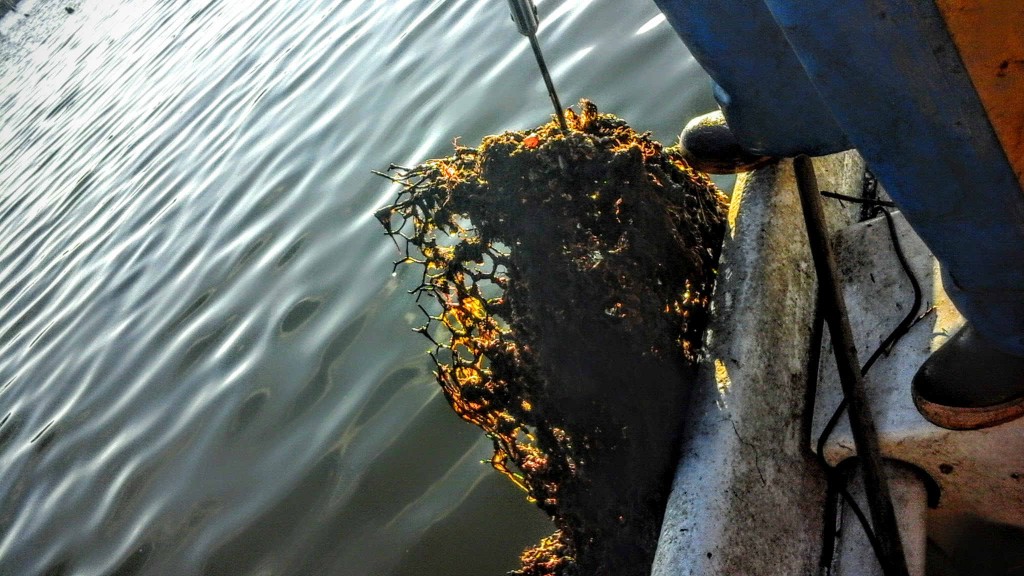
Since 2014, the North Carolina Coastal Federation has partnered with the National Oceanic and Atmospheric Administration’s Marine Debris Program, along with North Carolina Sea Grant, the N.C. Marine Patrol and local commercial fishermen, to remove derelict fishing gear from northeastern North Carolina waters in mid-January each year.
This year, about a dozen commercial boats dispersed throughout the entirety of Marine Patrol’s District 1, which spans from the Virginia line to Ocracoke. Fishermen were paid per day of work and were guaranteed three days of work — as weather permitted. Each boat was equipped with its own side-scan sonar and an electronic tablet for data collection.
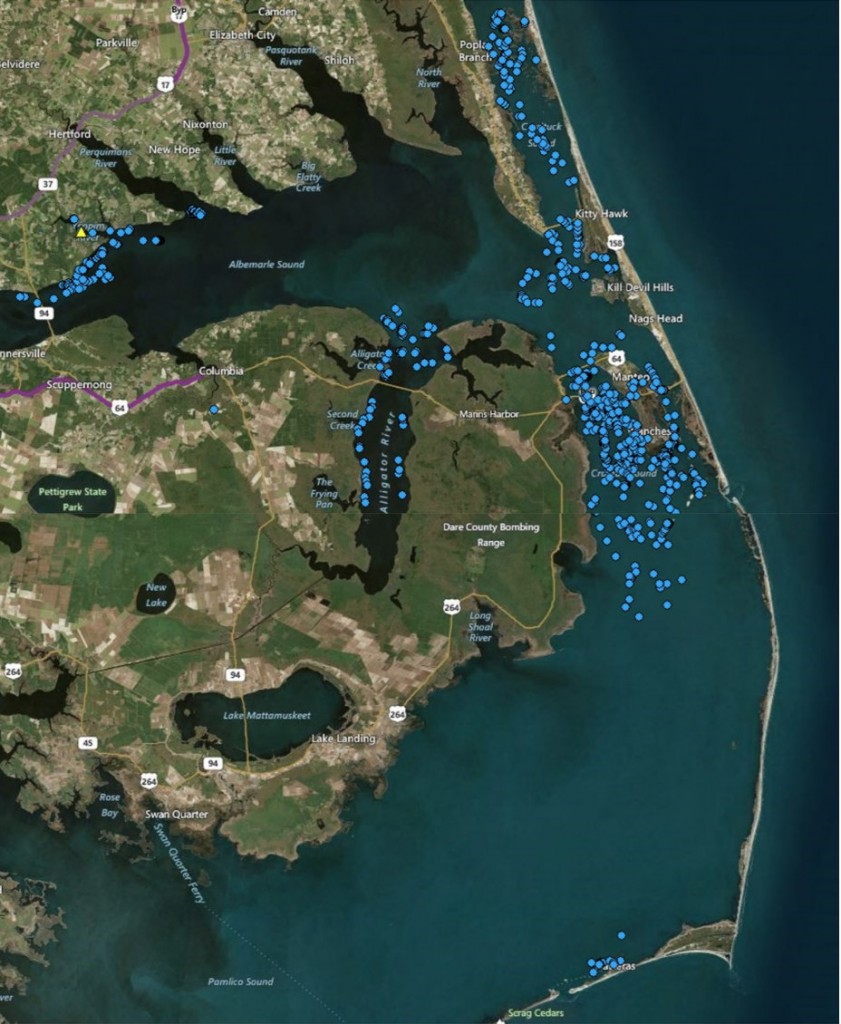
In 2016, 699 pots were collected by fishermen in District 1.
So, why continue this project… and why pay fishermen?
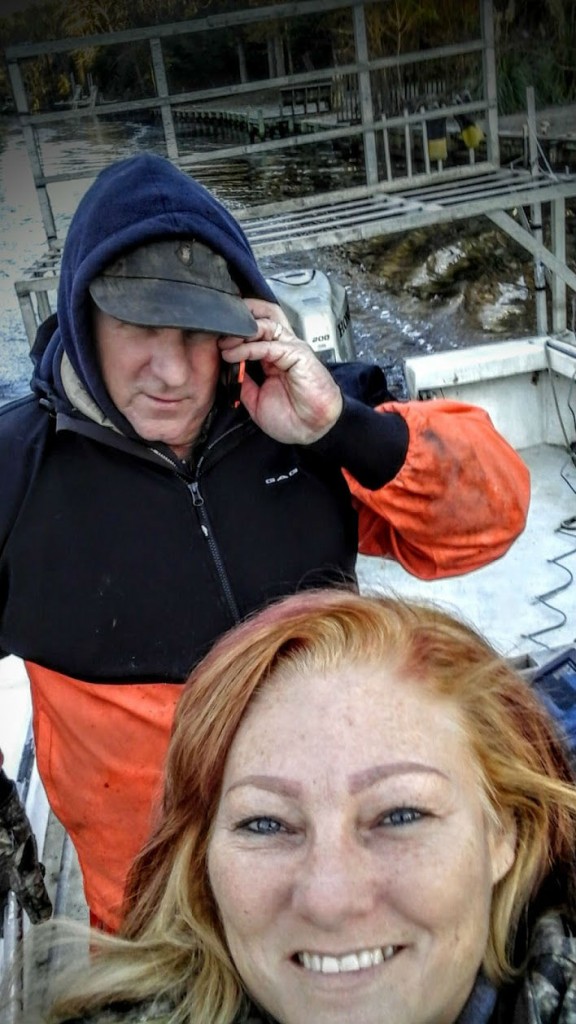
These commercial fishermen are on the water every day. Through their daily commute and fishery, they can visualize where these pots are accumulating over the course of a year. Pots can become “derelict” in a variety of different ways. They can be moved significant distances by large weather events – up to 10 miles as a result of one storm. Pots can become trapped in man-made structures, such as bridges. Some pots drift into vessel channels over time, increasing the likelihood of buoy detachment by vessel traffic. Employing fishermen to clean up pots is a simple solution: If you understand the movement of the water, you understand where the pots will end up.
January is generally a slower month for crabbing and fishing. Thus, it is a good time to offer an economic incentive for a positive, consensus-building activity. It helps to have many groups working together for a common goal, especially one that requires cleaning up such a large area. This project brings together a mix of groups: commercial fishermen, non-profits, scientists, law enforcement agents, etc. We’ve all got the same interest in mind, so let’s get the sounds clean during the one window of time that we can.
And, lastly, this project is saving the state money. Over the past three years, Marine Patrol officials estimate that resources used during the annual cleanup — including staff time, boat operation and travel — have been reduced by at least half as a result of this work.
It’s important to note the timing. From Jan. 15 through Feb. 7 each year, commercial fishermen are required to have crab pots out of the water. Pots left behind during this period are considered derelict, and may be collected. Marine Patrol has led the collection efforts since 2003. Patrol officers still play a large role in the cleanup, but some commercial fishermen now are directly associated with, and responsible for, removing the pots.
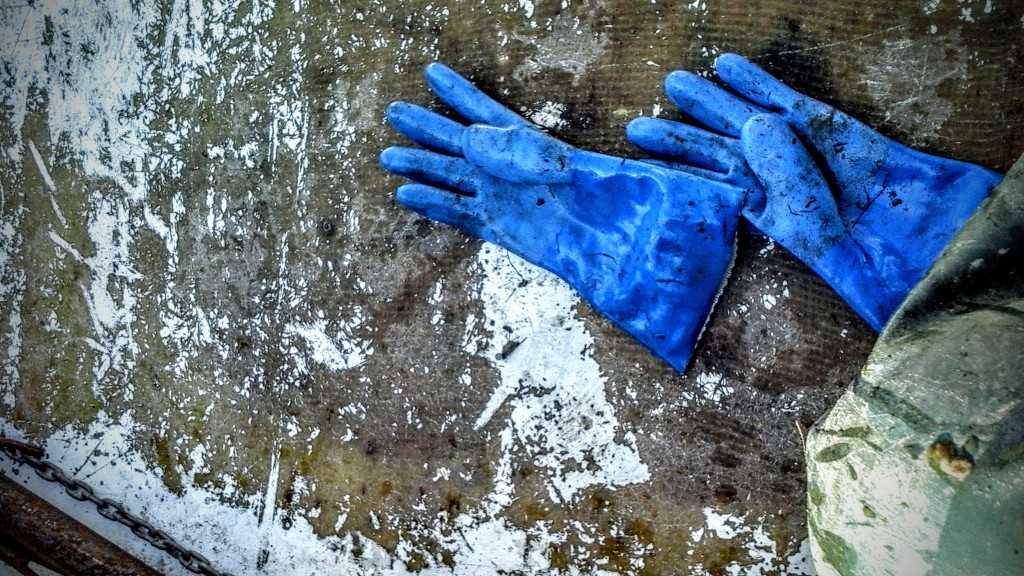
In total, 753 pots were collected in January of this year: 54 by Marine Patrol and 699 by commercial fishermen. Adhering to a classic adage – prior planning prevents poor performance – the team paid close attention to areas where pots are known to accumulate, based upon the past year’s weather events and patterns where pots were set.
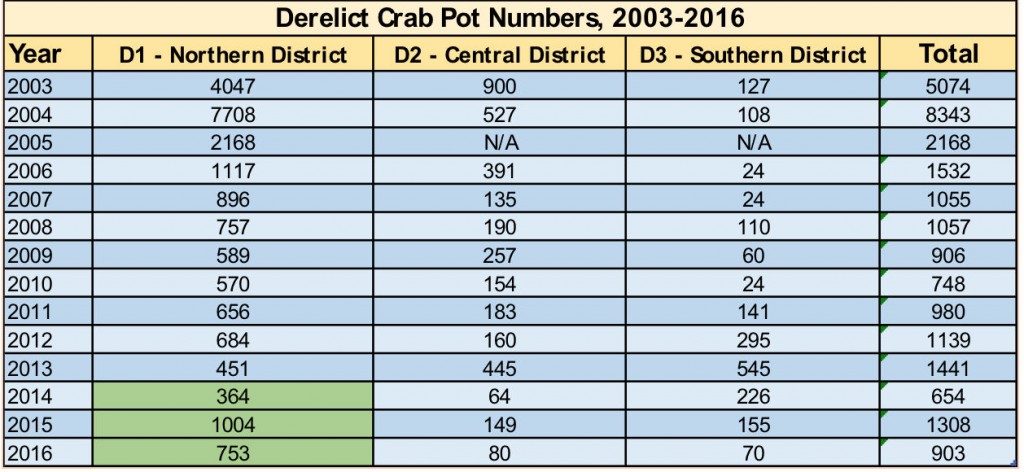
The N.C. Division of Marine Fisheries reports the total derelict crab pots collected between 2003 and 2016. Cells highlighted green note the N.C. Coastal Federation-led project, where commercial fishermen were hired to complete the District 1 efforts.
When the cleanup first began in 2003, the numbers of pots recovered during the closed period were much higher than what we are finding now. Over time, we’ve found that two external factors largely dictate how many pots are collected each year: weather and the price of a crab pot.
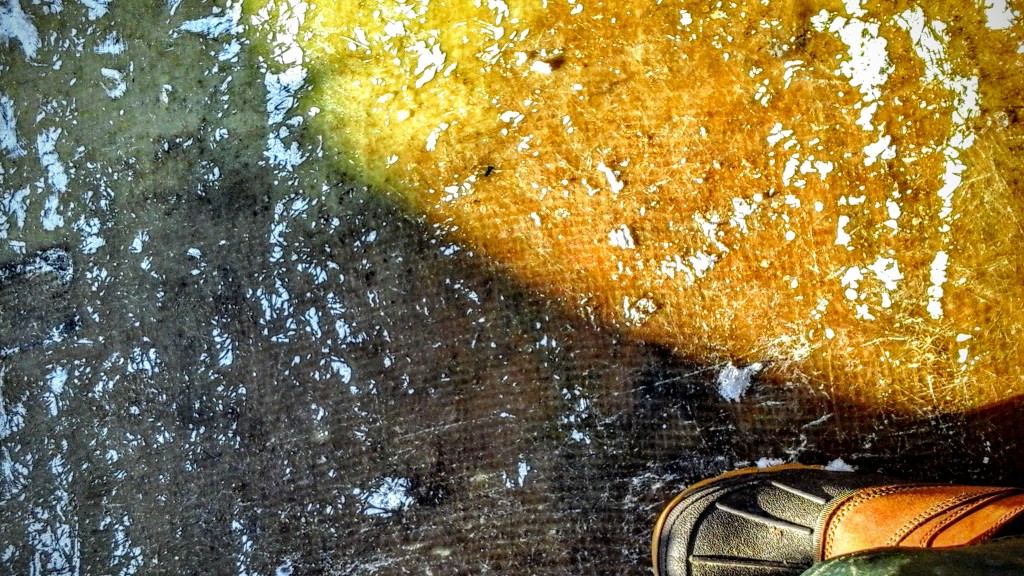
The early years were those with significant hurricanes. Further, the cost of a crab pot has grown to about $45 from a then $25 price point in the early 2000s. A low price generally means less incentive for a fisherman to voluntarily search for pots lost during a season. The rise in prices over the years would point to us finding fewer pots each January. Further, years without a major hurricane during peak crabbing season also have helped reduce the tally.
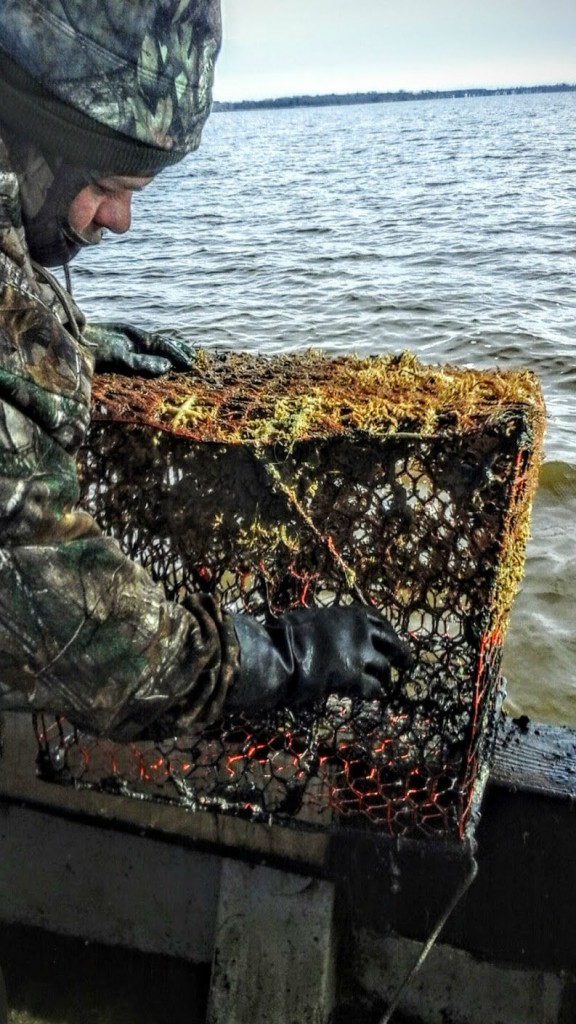 In the past, data on pot location and bycatch was recorded by hand on paper datasheets. While effective, this method proved to be quite time-consuming in freezing temperatures and gusty winds.
In the past, data on pot location and bycatch was recorded by hand on paper datasheets. While effective, this method proved to be quite time-consuming in freezing temperatures and gusty winds.
This year’s cleanup boasted new technology that proved to make everyone’s life a lot easier. Sea Grant’s Sara Mirabilio and Gloria Putnam initially tested this new method for us in 2015.
Putnam created a special application for our purposes using CyberTracker, a free data-collection software for smartphones and PDAs. Created by a South African nonprofit (Cybertracker Conservation), CyberTracker got its beginnings in the Kalahari Desert, where the imperiled hunter-gatherer lifestyle was given new meaning through technology. The program now is used all over the world — and still is available for free — all in the name of environmental monitoring on a global scale.
With additional funding from the NOAA Marine Debris Program for 2016 and 2017, our project was able to provide electronic tablets on which to run this new application. The resulting ease in both data collection and analysis has saved us untold hours of tedious entry and mapmaking.
As someone who is focused on data and results, but is enthralled with the human aspect of collecting the data itself, I saw a new and unintended thread of expression emerging from this year’s project. Just like any smartphone or tablet these days, the camera is part of the package. As such, we were able to allow our fishermen to take pictures in the electronic datasheet with little trouble.
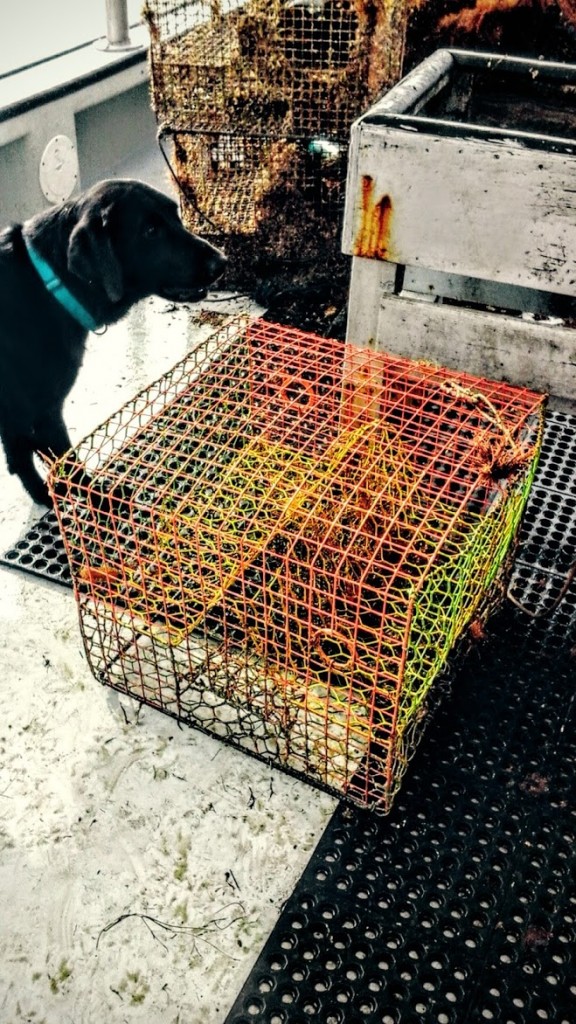
Since no one was required to take pictures of anything, I wasn’t expecting much of an artistic response from our crew. Not to mention, the weather conditions were otherworldly. The average air temperature for the collection days was 34 F. Most creeks had to be freed of ice before work could begin. And a blustery wind from the north was always standard — at least 20 to 25 knots. Yet, the photographs collected on the tablets serve not only to explain the data better, but also to illustrate the human element of this work.
All too frequently, this component of our work is lost. Skilled trades are becoming eclipsed by technology in so many aspects of our lives. But for me, seeing the photographs collected by our fishermen and women spoke depths to an important notion.
We have loaded these boats with electronic devices and protocols. We place emphasis on the methods of data collection, the nuances of buttons and applications. Yet, even still, the inherent composition of this 12-boat group remains: We have hired commercial fishermen for their knowledge of the waters that they work. Quite frankly, no piece of technology can replace that… yet.
Stay tuned for the project’s progression at the Federation’s website: www.nccoast.org/crabpotproject.
###